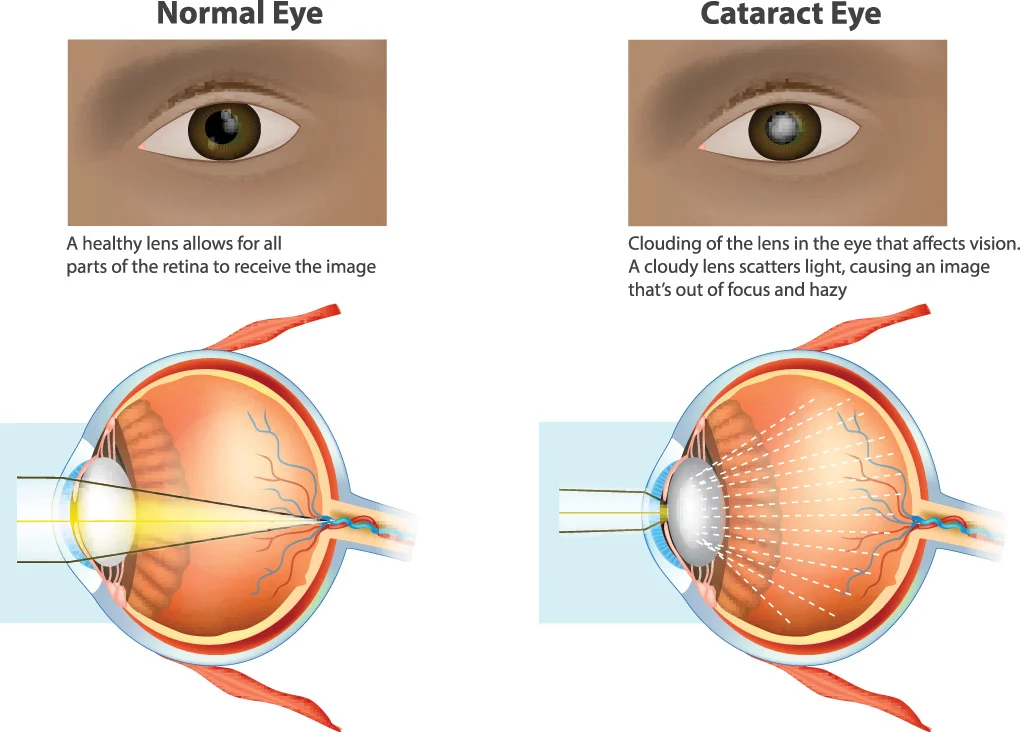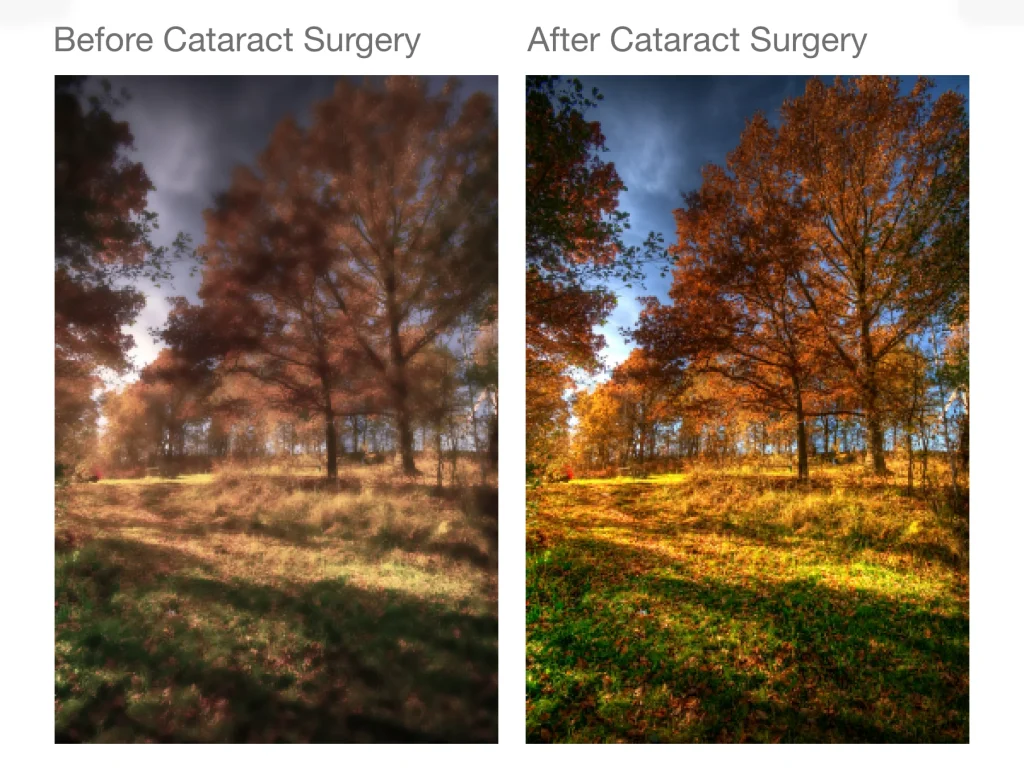What are Cataracts?
Cataracts happen as we age, when the natural lens of our eyes starts to degrade and cloud, turning a clear white or opaque colour. Cataracts affect half of all people over the age of 50 in Australia, and affect almost everyone by 80 years of age. Regular eye examination with your optometrist or ophthalmologist are crucial to diagnosis and treatment of cataracts.


Symptoms and Diagnosis
What Are the Signs of Cataracts?
When cataracts first appear, there’s a chance you won’t have any symptoms. But as cataracts develop over time, you may start to notice changes in your vision. Symptoms of cataracts include:
- Cloudy or blurry vision
- Light sensitivity
- Difficulty seeing at night
- Faded colours
- Double vision
- Glasses always seem dirty
- Halo around lights

How Are Cataracts Diagnosed?
If you experience any of the above symptoms, it’s important to consult an optometrist for a comprehensive eye examination. For people aged 60 or older, you should get an eye exam every year. There are multiple tests used for cataract diagnosis:

Visual Acuity Test: Also known as a vision test, this assesses your ability to see clearly at different distances both with and without glasses.
Slit-Lamp Exam: A slit-lamp exam uses an instrument called a biomicroscope to complete a detailed examination of the different structures of the eye, such as the cornea, iris, and lens.
Retinal Exam: This exam evaluates the back of the eye, specifically the retina and optic nerve. The eye specialist can examine the health of the retina through dilated pupils, identifying any signs of diseases such as diabetic retinopathy, macular degeneration, or retinal detachment.
Tonometry: This test measures the intraocular pressure of the eye. Increased pressure in the eye can be a risk factor for glaucoma.
Causes and Types
What Are the Causes of Cataracts?
Aging is the most common cause of cataracts as the proteins in the lens of your eye begin to break down after you reach age 40. However, there are other common causes of cataracts, such as:
- Family history of cataracts
- Serious eye injury or surgery
- Diabetes
- Obesity
- High myopic error
- Extended use of corticosteroid medication
- High alcohol consumption
- Smoking
- UV radiation

What Are the Types of Cataracts?
There are myriad different types of cataracts, all of which will result in some combination of the aforementioned symptoms. Treatment and diagnosis for the different types of cataracts is essentially the same. Regular eye examinations with your optometrist or ophthalmologist are essential in order to monitor progression of your cataract.
- Cortical cataracts develop in the outer portion of the lens, known as the cortex. They often present with a spoke-like pattern, extending from the periphery towards the centre.
- Nuclear cataracts affect the central or nuclear region of the lens and are characterised by yellowing and hardening of the central lens over time.
- Posterior subcapsular cataracts form at the back surface of the lens, just beneath the lens capsule, and are typically small opacities that can significantly impact vision.
- Posterior capsular opacification occurs for about 20% of patients after cataract surgery. This condition occurs as a result of leftover lens epithelial cells dividing and regrowing. They can cause blurred vision. Treatment involves a simple in-rooms laser procedure, known as a YAG laser capsulotomy. Once this has been treated, posterior capsular opacification cannot reoccur. People who have undergone eye surgery should remain vigilant and undergo regular follow-up examinations to monitor for potential secondary cataracts.
- Congenital cataracts are present at birth or develop during childhood. They can arise from genetic factors or prenatal influences, such as infections, trauma, or metabolic disorders affecting foetal development. Depending on their size and location, congenital cataracts may cause visual impairment and potentially lead to amblyopia (lazy eye) if not addressed promptly. Early diagnosis and intervention are key to managing congenital cataracts effectively.
Queensland Eye & Retina Specialists
accepts referrals via email, Oculo, Medical Objects and fax.